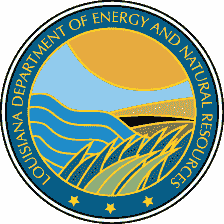Office of Coastal Management
DNR begins work on coastal zone boundary study
The Louisiana Department of Natural Resources’ Office of Coastal Management is beginning a science-based study on the inland boundary of the state’s coastal zone to determine whether the boundary set more than 30 years ago still meets the coastal zone management needs of the state and its people.
The state Coastal Protection and Restoration Authority, acting upon the direction of the state Legislature, authorized the comprehensive study and evaluation of the coastal zone boundary by DNR’s Office of Coastal Management and calling for the final draft of the study to be submitted to the CPRA on or before its February 2010 meeting.
The Coastal Zone Management Program, enacted by the federal government in 1972, creates state and federal partnerships with the goal of protecting, restoring and responsibly developing coastal communities and resources. Louisiana created its coastal management program within the federal guidelines in 1978.
The program gives DNR the authority to regulate development activities and manage resources within the defined coastal zone.
“Our coastal zone boundary was set more than three decades ago, and much has changed in our state since then. Ongoing erosion and hurricanes have changed the physical makeup of our coast, and new programs, new science and ever-increasing interest have changed the way we approach protecting it,” said DNR Secretary Scott Angelle. “It is very appropriate that we take a fresh look at the boundary of our coastal zone to ensure we are managing our resources in the most effective way.”
The health of Louisiana’s coast is crucial to both the entire state and the nation:
- Nearly half the state’s population lives in coastal parishes
- More than half of the state’s annual revenues are generated in the coastal zone
- Five of the top 15 tonnage ports in the U.S. depend on the coastal zone
- About 26 percent of the oil and 26 percent of the natural gas used by the nation flow through Louisiana
- Louisiana is the top producer in the lower 48 states in fisheries, and the top producer in the nation of oysters, blue crabs and crawfish.
The coastal zone designation can be important to parishes because they can be eligible for funding, loans and participation in coastal programs, but also take on new funding and regulatory responsibilities.
The CPRA’s directive calls for the coastal zone study to be science-based, to consider existing legal issues and other state coastal programs, to take economic concerns such as energy, fisheries, maritime transport and tourism into account, and to consider archaeological and cultural concerns.
The study will include participation of groups outside DNR, including other state and federal government agencies, an advisory group of stakeholders, a series of public meetings in the fall and a web site allowing for further public comment.
“It is important in a process such as this that the public has every opportunity to be heard,” said Louis Buatt, assistant secretary with DNR’s Office of Coastal Restoration and Management. “We intend for any changes to the coastal zone to be science-based, easily understood by the public and able to meet the needs of our state for another 30 years.”
More information on the coastal zone study can be found at http://dnr.louisiana.gov/coastal/.
News Archives »